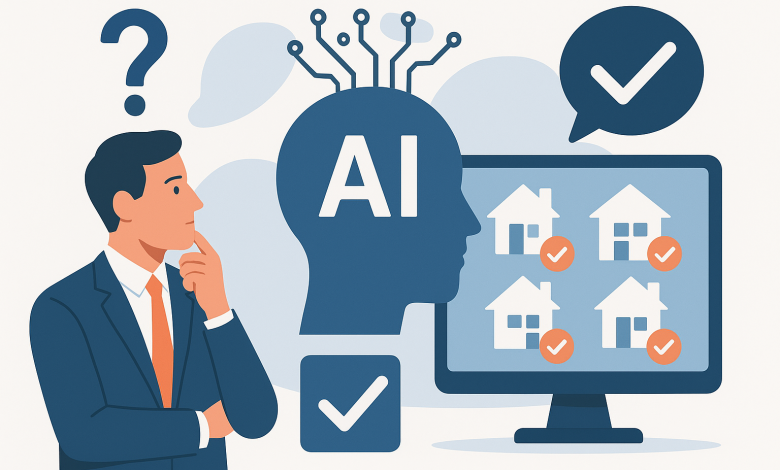
We No Longer Do Guesswork
For decades, pricing a property came down to a mix of comps, intuition, and how quickly a seller wanted to trade. AI has eliminated much of this guesswork. Models now also include localized data like school rezoning, flood risk, or even new zoning proposals that the market isn’t aware of yet. Some clients I’ve worked with price homes within 1 to 2% of the eventual sale by using AI-driven tools, which is far smarter than traditional appraisals. Here, speed is of importance. Agents and investors are now able to run real-time simulations on pricing strategies instead of waiting weeks for outdated reports.
Discovering Surprises
Most buyers initially don’t know exactly what they want until they see it. AI is helping them out by making platforms move from static search filters into something similar to discovery engines. Instead of “3-bedroom under $600,000,” buyers can describe specific lifestyle cues like “walkable to coffee shops, lots of natural light, low-maintenance yard,” and search for exactly what they want. AI then reviews property descriptions, their photos, and even neighborhood opinions to analyse options. It not only shortlists but also unveils hidden matches that buyers didn’t even think to ask for. This is powerful for both urban millennials and downsizing retirees.
Construction and Development
Developers have started using AI for project feasibility and for predictive design. For example, some firms feed AI models with years of tenant feedback to optimize floor plans at the very start. This way, they are able to design better e.g., kitchens that flow better or layouts that don’t waste hallway space. It helps reduce costly redesigns and builds housing that reflects actual living patterns. The ultimate effect is lower construction waste and quicker approvals because city planners prefer data-backed site plans.
Risk Analysis
Insurers have always had the upper hand in calculating property risk. AI is changing that. Investors now run their own predictive models for climate exposure, tenant default probability, or market downturn scenarios. That means you don’t have to wait for a bank to tell you no, you can know upfront whether a project is viable or not. I recently worked with a multifamily investor who used AI to run 10 year flood models. This allowed him to negotiate insurance rates with better awareness.
Tenant Experience
Landlords used to think about occupancy as either leased or vacant. With AI, they can now run predictive analytics and flag which tenants are likely to renew and which ones will be leaving soon (even before tenants say it themselves). This is done through analysing payment timing, maintenance request frequency, and engagement with building services. For property managers, this means you can avoid this early on by offering incentives instead of panicking after a unit is empty. Tenants benefit from this too, because it provides a smoother renewal process that feels more personal.
Data Ownership
Here’s the part that I feel is not discussed enough. AI can only work around the data you feed it. So the actual challenge in real estate becomes who owns the data inputs. MLS feeds, private appraisal records, and tenant history are fragmented and guarded. Large brokerages and proptech firms are building private ecosystems for this purpose to give them an edge. This is also putting small operators at risk of being shut out if they can’t tap into clean, large-scale datasets. The industry now needs to decide whether we’re comfortable letting a handful of players own the predictive layer of real estate decision-making.
Decision-Making Frameworks
C-suite leaders in real estate, like myself, can’t just ask “should we adopt AI?” The better question is, how do we structure decisions differently now that AI exists? I’d like to suggest a three-step framework. Firstly, baseline decisions like pricing and tenant screening should always include an AI-informed option. Even if leadership doesn’t follow it, ignoring it can lead to missed opportunities. Secondly, scenario planning should use AI to test what-if models across markets, construction costs, and tenant churn. The outcome is the ability to see 20 futures at the same time. Lastly, human judgment layer should stay non-negotiable at all costs! Leaders should be clear about which calls require a human to step forward, like long-term community impact or ethical considerations. Without these boundaries existing, decision making can turn into blind faith in algorithms.
What’s Next
The next step isn’t smarter pricing or better searching, it’s integration. Imagine AI models that can connect property search with construction feasibility, tenant risk, and financing all in one continuous loop. This can lead to a lot of disruption, because whoever builds the system that connects these verticals will also be in control of the real estate pipeline end to end, and this can be a little terrifying.
AI can’t eliminate the human role in real estate completely. If anything, it puts more responsibility on industry leaders to interpret outputs, weigh social impact, and also keep decisions aligned with long-term value instead of just focusing on short-term gains. The winners will be those who embrace AI not as as a partner in everyday operation instead of just a new, trendy tool.




